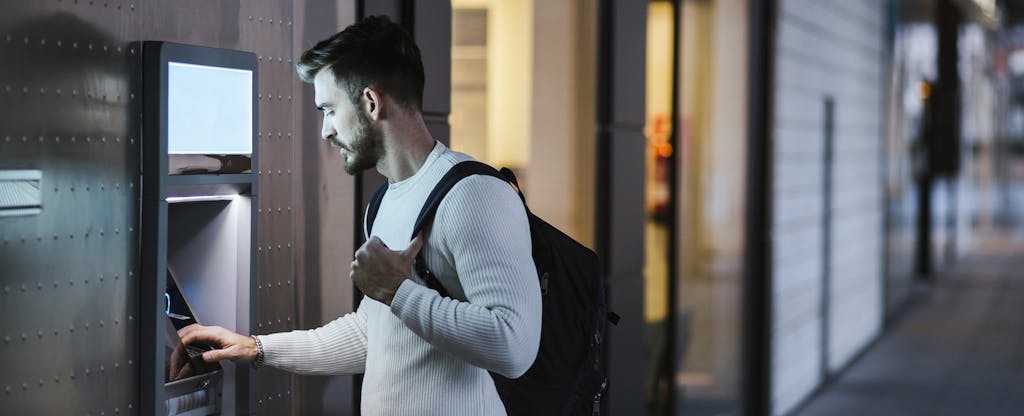In a Nutshell
A cardless ATM allows you to withdraw cash without using your debit card. Instead, you use your phone’s digital wallet or mobile banking app.If you leave your wallet at home on the way to an ATM, you may still be able to withdraw cash.
Technology has brought big changes to nearly every part of our financial system, and ATMs are no exception. Just like tap-to-pay features have made it easier to run errands without your credit or debit card on hand, cardless ATMs allow you to access your cash with just your phone.
We’ll review how cardless ATMs work and some of the pros and cons to be aware of before you use one.
What are cardless ATMs?
A cardless ATM allows you to withdraw cash without inserting your debit card as you normally would. Instead, you use a mobile app or your phone’s mobile wallet to access ATM features such as withdrawing cash or checking your balance.
In some cases, your bank may require you to download its mobile app to use a cardless ATM. But in other cases, you may already have this ability if you have your card saved in your digital wallet.
How do cardless ATMs work?
In general, a cardless ATM works by receiving your banking information through your mobile device rather than from a debit card that you insert. There are a few different options for making cardless ATM transactions, and the options available to you likely depend on your financial institution and the ATM you’re using.
Tap access
Some financial institutions allow you to access ATM features the same way you would make a contactless card payment in a store. These transactions are done with what’s known as near field communication, or NFC.
Using a mobile wallet such as Apple Pay or Google Pay, you can tap the contactless symbol on the ATM. The ATM will respond as if you’d entered your debit card and will instruct you to enter your PIN.
Keep in mind that you may only be able to use this feature with the ATM of a financial institution where you have a checking account. For example, both Chase and Wells Fargo require that you have one of their debit cards to access the tap feature.
QR code
Another common way that banks allow you to access the card-free ATM feature is through their mobile apps. In this case, you would first download your bank or credit union’s mobile app.
When you’re at the ATM, you’ll select an option for cardless cash and a QR code will appear on the screen. You’ll scan the QR code with your mobile banking app, and then proceed as normal.
With the cardless cash feature, you may or may not have to enter a PIN.
Temporary PIN
Similar to the QR code that some banks use, others use a temporary PIN to connect your mobile banking app to the ATM. When you use this feature, you’ll select the option for cardless ATM access. A code will be displayed on your phone, and you’ll have to enter it into the ATM to access your account or withdraw cash.
Pros and cons of using a cardless ATM
There are some advantages to using a cardless ATM, but also some potential downsides.
Pros
- Convenience: A cardless ATM eliminates the need to carry around your debit card to withdraw cash. And even if you have your card, you don’t have to dig through your purse or wallet to find it — you can just use your phone.
- Security: Cardless ATM access may provide some additional security, making you less vulnerable to thieves using card skimmers trying to steal your card’s information.
- Less contact: Though it may not eliminate contact altogether, a cardless option may require less physical contact with an ATM.
Cons
- They’re not everywhere: Not all ATMs allow for cardless use. And some financial institutions may only allow their own customers to use the feature.
- Phone security risk: Cardless ATM use requires some of your banking information to be on your phone, either in your digital wallet or a mobile app. If you lose your phone and haven’t secured it, someone else might be able to access your account.
What’s next?
Using a cardless ATM has its benefits — you don’t have to carry or dig around for your debit card. But if you go this route, you should take safety measures with your phone. Require a passcode, facial recognition or fingerprint access for both your phone and banking app to ensure that if your phone is lost or stolen, your banking information can’t be accessed.


